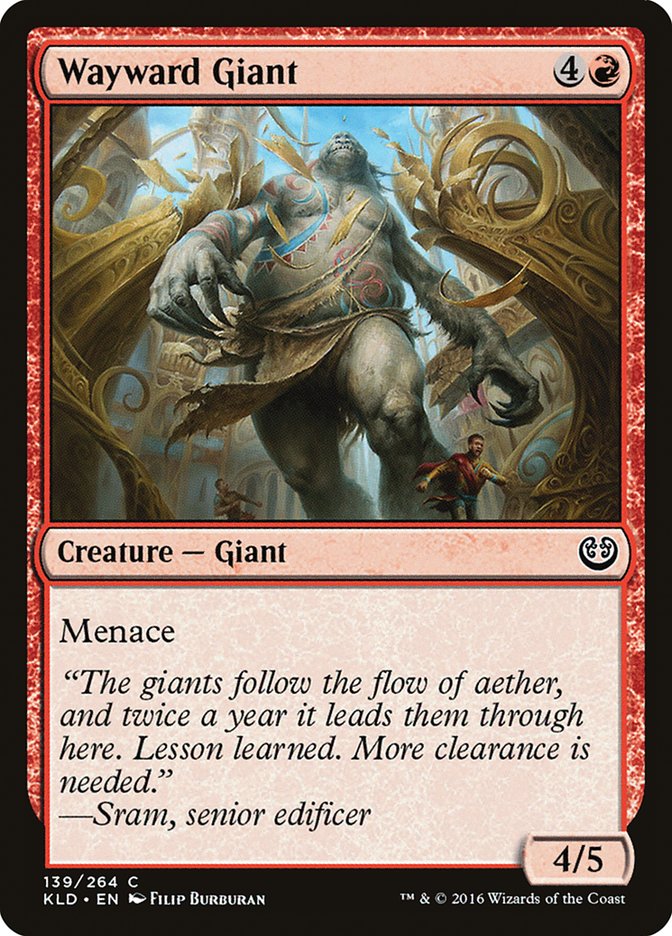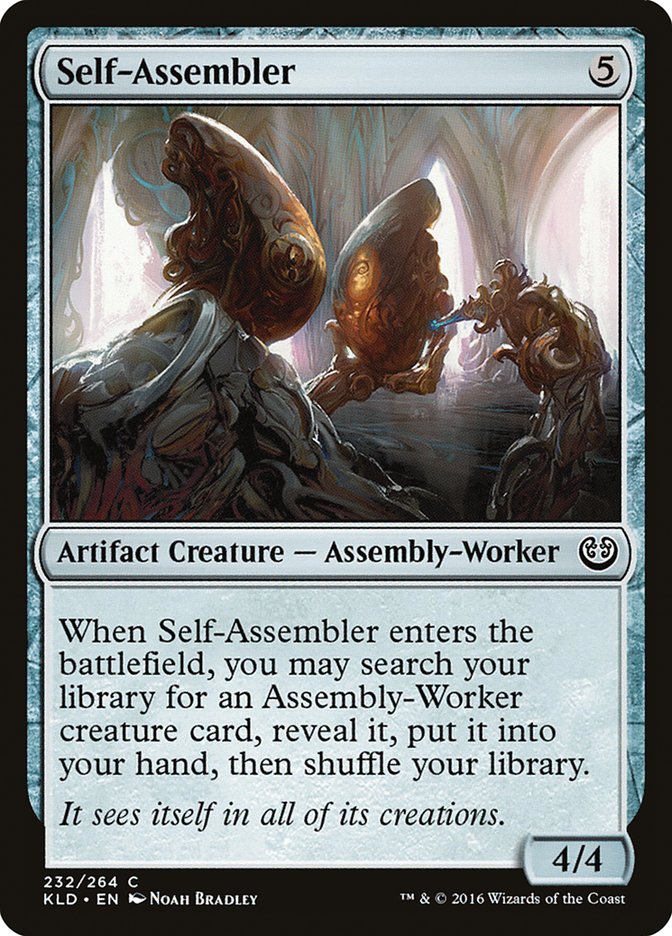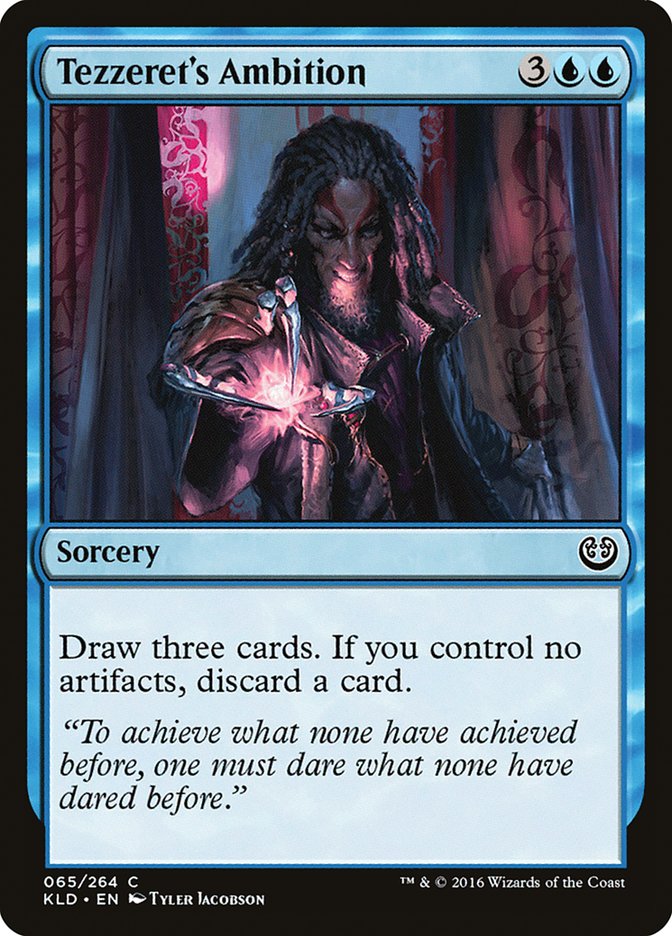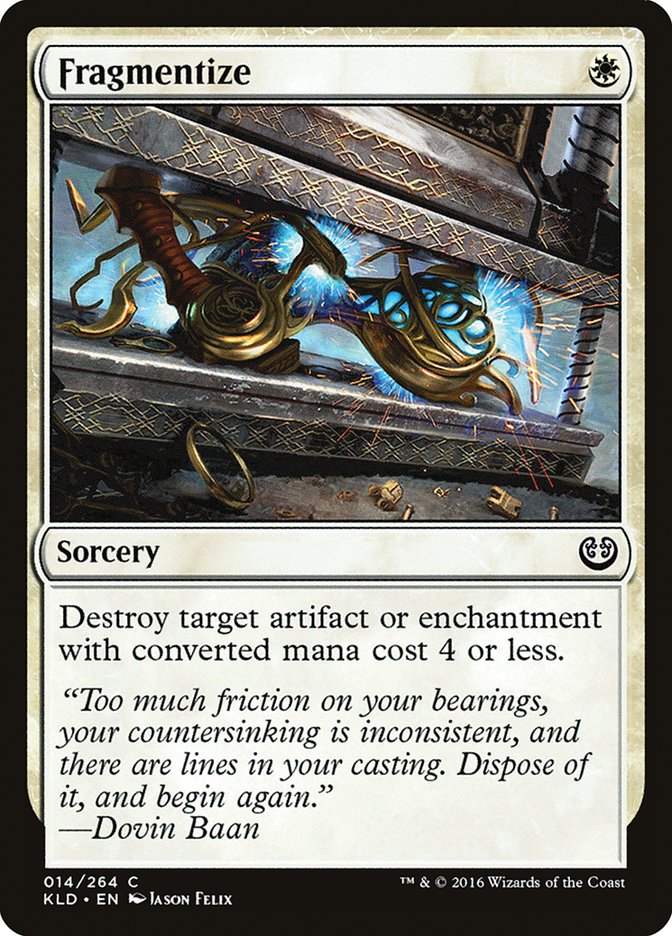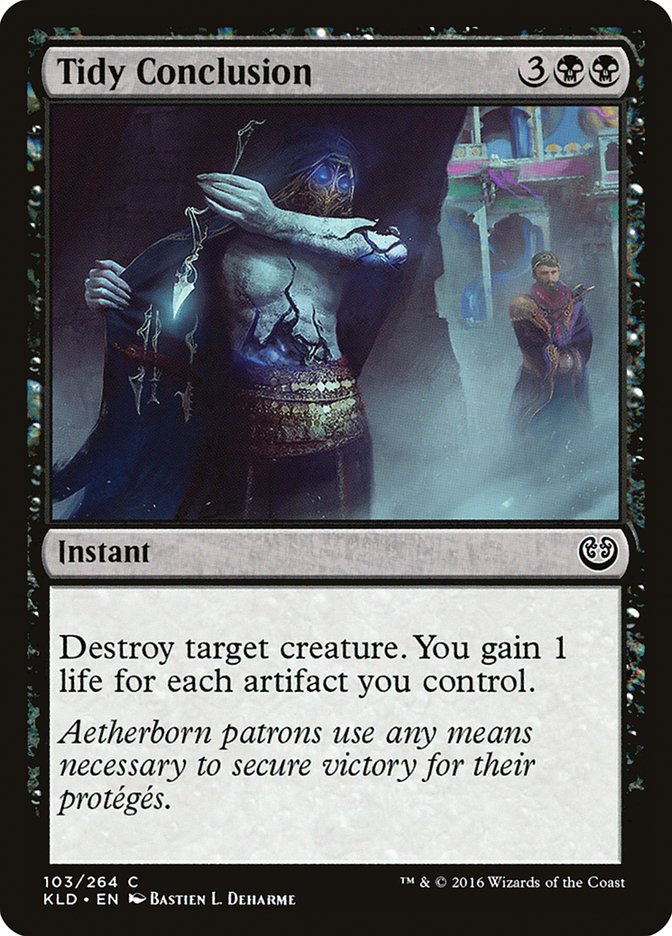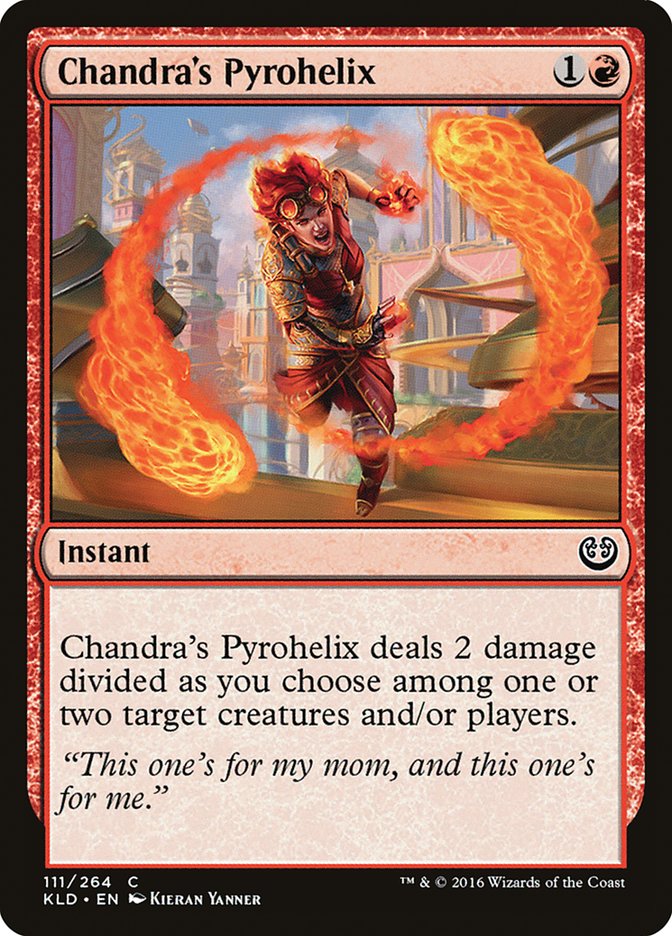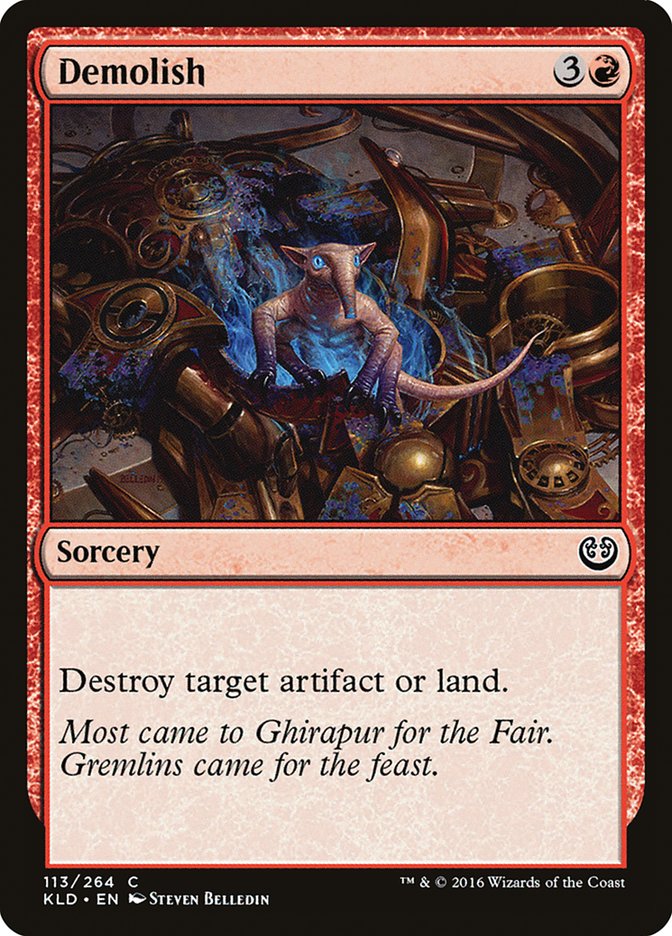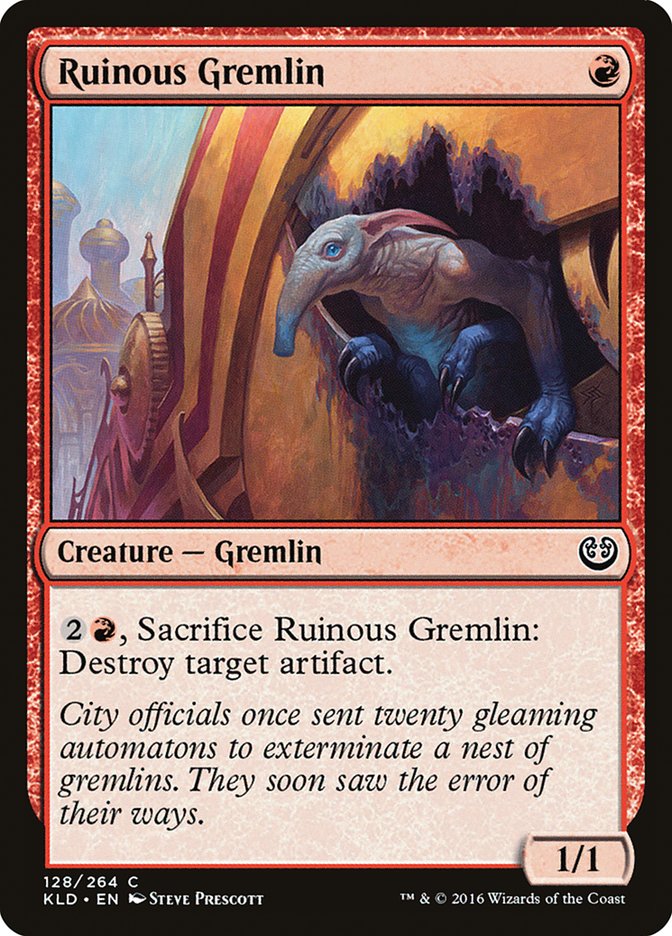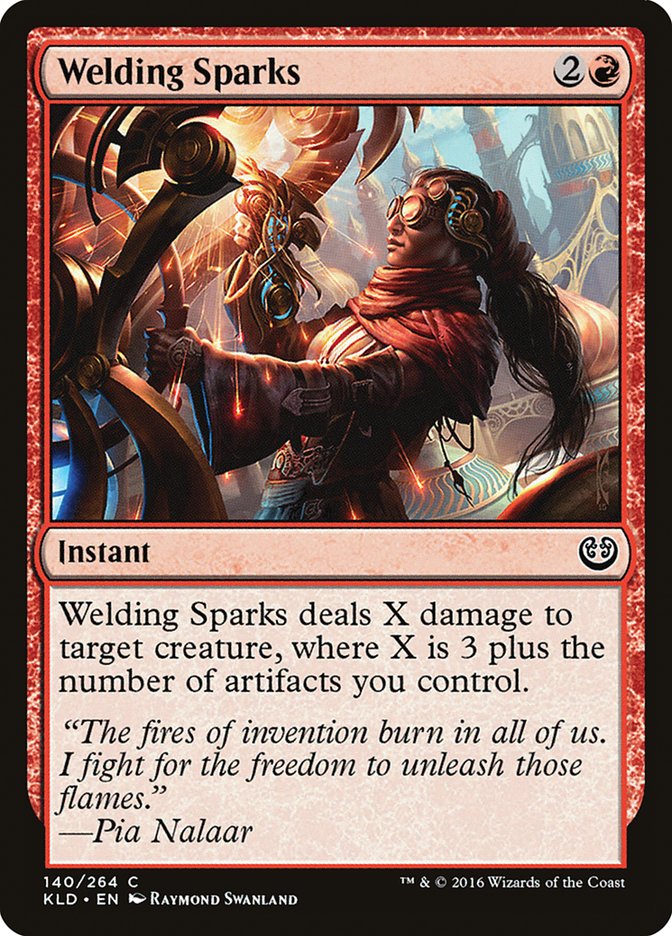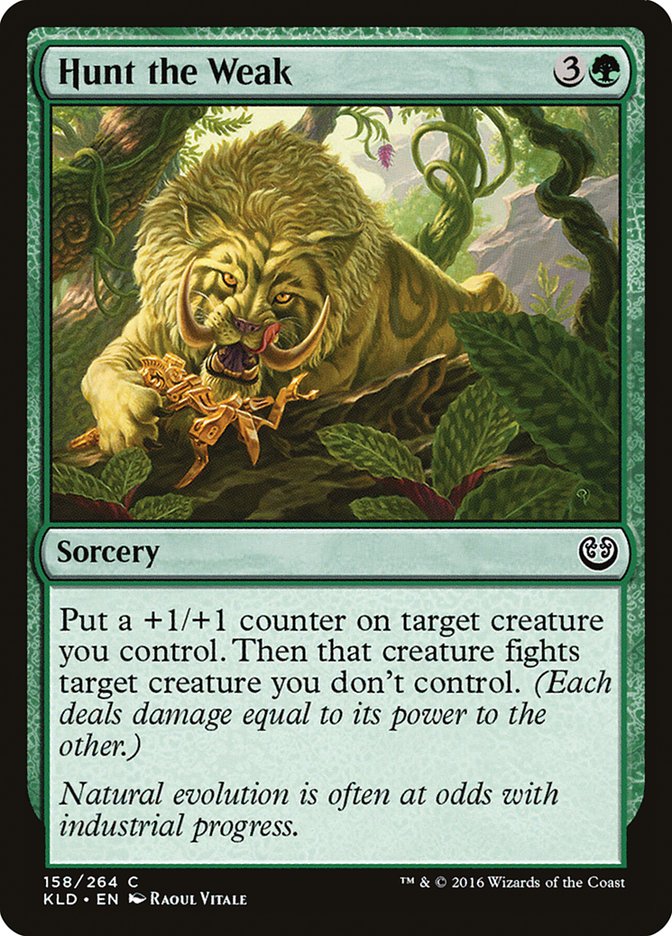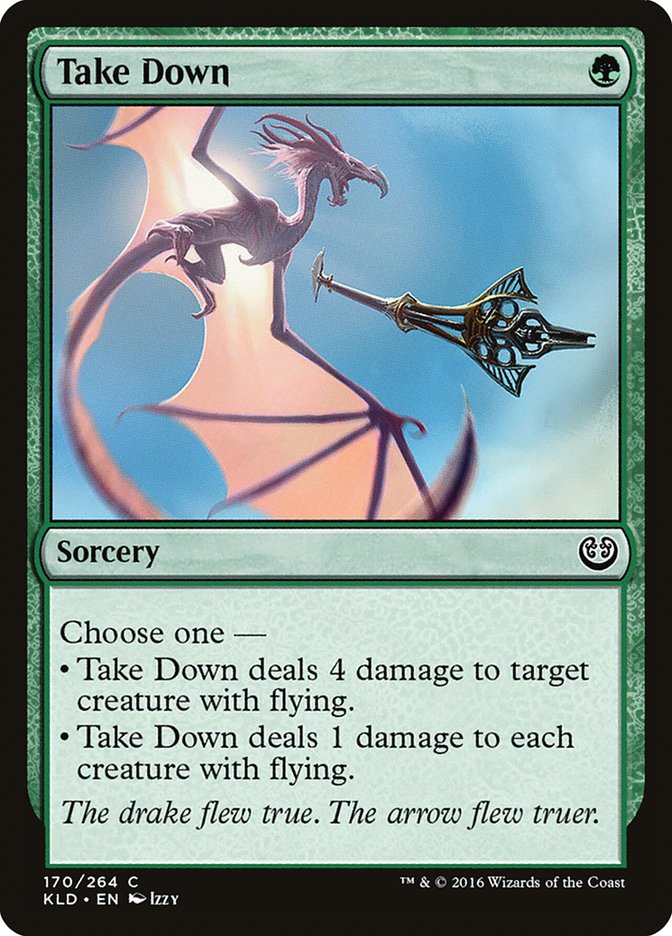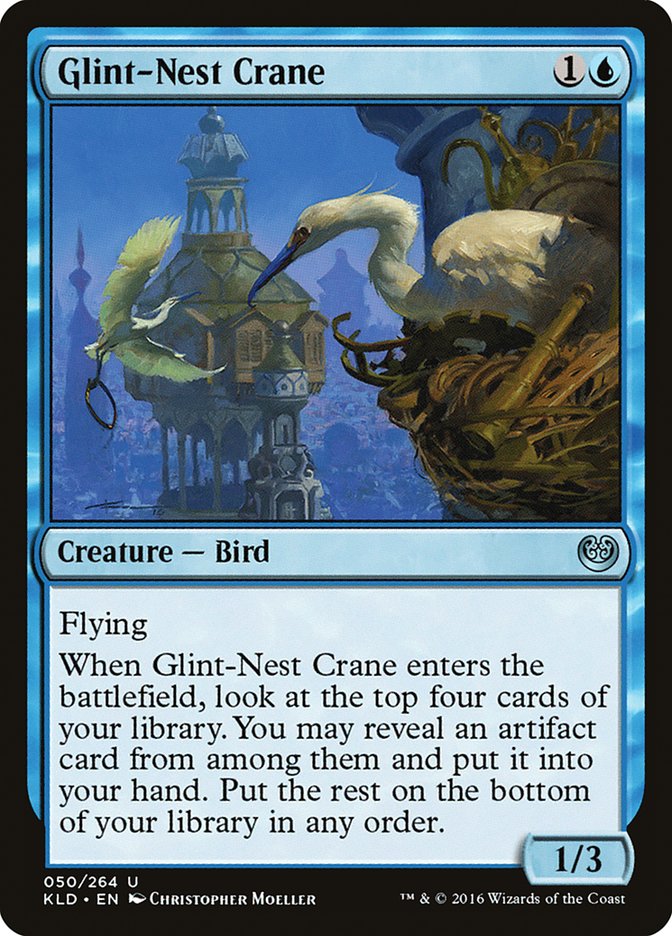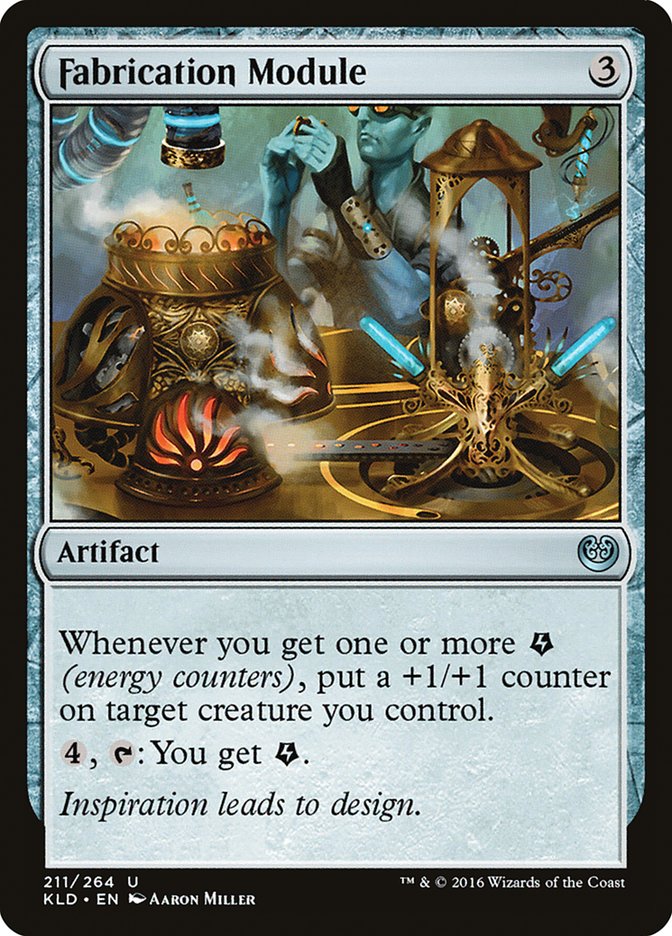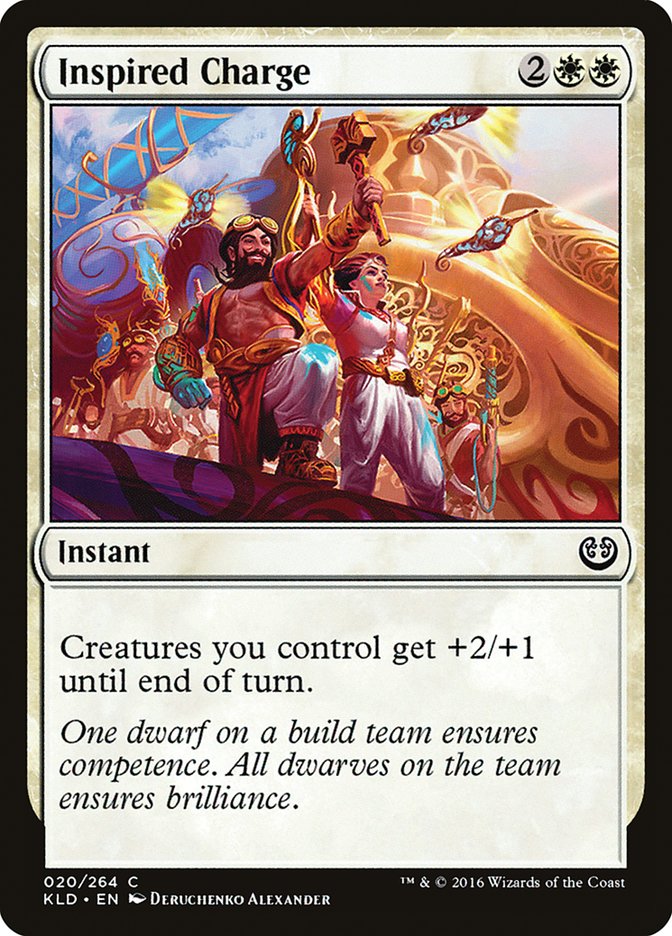This weekend I got my first chance to play with Kaladesh, and after three Sealed events and four drafts, I’ve started to get a feel for the format. While there’s still a lot to explore and a lot cards I haven’t played with yet, I’ve had a chance to play with every color and a good mix of strategies, and I’ve had a good mix of results.
1. Big Effects Matter
The battlefield often get cluttered with little creatures quickly, as people play creatures that make Energy or tokens and are otherwise below rate, and people often start slowly due to spending early turns playing Prophetic Prism and Puzzleknots. The small creatures make it difficult for aggressive starts to really punish the low-impact early starts, so the games tend to go a little longer than games in other formats.
As a result, high-impact spells are worth paying more for. Random big creatures that you normally wouldn’t play perform quite well, and I’ve had really good results with cards like Self-Assembler, Wayward Giant, and even Accomplished Automaton.
Similarly, high-impact spells have also played well, most notably Tezzeret’s Ambition. Drawing cards is excellent when the format doesn’t really punish you for taking the time to do so.
In the drafts that I’ve done so far, all of these cards have gone very late, and I’ve never had trouble getting a lot of expensive spells. I’m not sure if this is because it’s taking people time to adjust to the speed of the format or if there are just a lot of solid expensive cards available. I’m not sure how the world starts looking if everyone decides to play most of their five- and six-drops over three-mana 2/3s and 3/2s–obviously you still need to do something in the early-game, but I can certainly imagine some decks, especially after sideboarding, just trying to go to extremes to go over the top of each other.
I personally haven’t played much with Vehicles yet. You really have to be aggressive to make them good, because they’re really bad on defense, but the larger Vehicles are a great way for aggressive decks to do something extremely high-impact in the late game, as nothing is bigger than the big Vehicles, and I wonder if I’ve been underestimating them.
2. Removal is at a Premium
The removal spells in this set are very good and there aren’t very many of them, so you need to prioritize them. As a rule, I like removal less than most players, so I’m not just saying this as a truism about Limited. In this set in particular, there are a relatively low number of removal spells at common, and the removal spells that do exist are pretty good. Also, the nature of the format as described above, where most things don’t matter and the game is decided by a few high-impact cards also points strongly to removal being good.
Let’s go over the common removal in more detail:
White:
Some decks will have very few artifacts and enchantments, and most of the artifacts and enchantments they have will be the kind of low-impact cards that you really don’t want to use removal on. On the other hand, while destroying artifacts is the big draw to this card, since this is an artifact set, destroying enchantments is surprisingly important as there are a handful of very high impact uncommon enchantments as well as Revoke Privileges and Malfunction. This also offers an answer to some of the hardest rares to beat or interact with like Key to the City and Smuggler’s Copter. I think I’d always maindeck at least one Fragmentize, and I’d want to pick up more for my sideboard.
I’m not wild about this one. It doesn’t answer large creatures or utility creatures. I wouldn’t prioritize it and I wouldn’t always play it, but it’s not embarrassing.
This is about what white expects in its common removal spell. There are a lot of good cards that this doesn’t deal well with, since it doesn’t stop activated or static abilities, and white has a lot of good answers to it (Fragmentize, Acrobatic Maneuver, Aviary Mechanic, and Wispweaver Angel), and blue has Aether Tradewinds, but despite its failings, I think big creatures are important enough that you still need to prioritize this card.
Blue:
I hate this kind of card. I’ve cut Sleep Paralysis more often than I’ve played it, and the drawbacks mentioned for Revoke Privileges all apply here. Four mana is a lot. I’m willing to play this if I have to, but I’m not happy about it.
Beyond that, blue has bounce spells and counterspells. The bounce spells have the problem that bounce isn’t as good if the format is less tempo-based, but each of them allow you to get some value beyond just returning your opponent’s creature, so they’re both fine, and the counterspells are either very clunky or very narrow, and very clunky is a big problem if you’re filling your deck with expensive cards, as they can be easy for your opponents to play around.
Black:
Actually killing a creature for real is so good, and this costs such a small amount of mana. You need to be able to kill big creatures, which this can’t do by itself, but it’s a great payoff for having other Energy in your deck, and combining Live Fast and Die Young has been even better than I expected. This is one of the best commons.
This barely counts as a removal spell; it’s much more of a combat trick. It looks like it should be pretty good, but I think it’s the exact kind of low-impact card that you end up needing to cut to put more high-impact cards in your deck if you respect my first point about the format.
Five is a lot of mana for a removal spell, but this has enough going for it that I’m excited to take it early–instant speed, kills anything, and can gain a good amount of life sometimes. I’m happy to play it even if I’m not going to gain much life from it though. This and Die Young are the biggest reason to play black, whose other commons are somewhat underwhelming.
Red:
I’ve seen this devastate some people (usually by killing a Foundry Screecher and something else), but in general, it doesn’t interact well with most things that really matter. It’s a strong card, but not something I always want as many of as I can get my hands on. I’m not excited to take this very early, but I would like to end up with one or two.
These have been a little worse than I’d expect. They’re a lot more expensive that Fragmentize, and the option to destroy small enchantments has been a lot better than the option to destroy large artifacts. I like to start one Ruinous Gremlin at most, but it’s good to have one or two of these in your sideboard.
A three mana instant that deals three is about the rate I expect in a premium red common–usually it can hit players and has some upside, but that’s not a terrible baseline. A red removal spell that can deal four or more damage is always a priority, and this can deal four to five pretty easily, and three mana is a great rate for that. This is probably the best common in the set.
Green:
I haven’t decided how highly to take this. It’s better than Fragmentize, but worse than killing a creature. I think the effect is good enough that I’d play two, but not two and a Fragmentize, and again, I’m always happy to have access to more.
This is clunky enough that I often don’t like it, but killing a creature and coming away with something to show for it is great. I haven’t had it yet, but this seems like a very good set for it, so I think it’s among Green’s best commons, and I could believe that it’s the best.
I was really disappointed to learn that this is a sorcery, as I’d assumed it was an instant at first. That means it can’t answer Weldfast Wingsmith, Sky Skiff, or Dukhara Peafowl under most circumstances, which really limits its utility for a card that’s already pretty narrow. This is definitely not a format where I’d maindeck this card, and I’d barely prioritize it for my sideboard.
3. Synergy is Overrated
Again, this is not my normal position. I love making the most of my cards, exploring themes, and building linear decks. The statement “synergy is bad” is nonsensical, so that’s not what I’m saying, but it’s easy for linear themes in this format to be a trap. Basically, if you get cards that reward you for pushing a certain theme, like artifacts matter, Energy matters, or +1/+1 counters matter, don’t go too far out of your way to build toward it–filling your deck with enablers is a good way to find that you have too many low-impact cards, and lose games to random big cards when your synergies fail to amount to as much as you expected.
As an example, Gearseeker Serpent is a great card, so I’ve taken it early and looked to draft an “affinity” deck to maximize it, prioritizing artifacts that would lower its cost. Glint-Nest Crane is another card that can lead you down this path. Taking a slightly worse card because it’s an artifact so that, if I draw my Glint-Nest Crane, it has a slightly higher chance of finding a card is just not worth doing, and Gearseeker Serpent is basically never coming down on turn 4, so you really don’t need to work that hard for it–if you happen to have two artifacts so that you can cast it on turn 5, that’s great, and if you draw it late and you can play it and something else because you have a lot of artifacts, that’s nice too, but it’s an acceptable six-mana card, and it’s very easy to have an artifact, so just don’t worry about trying to push it.
Basically, this feels a lot like delirium in EMN–there are cards that get a little better with delirium, but the payoff is a lot smaller than it was on the uncommons and rares in Shadows over Innistrad, so any time you try to draft a delirium deck, you find yourself making a lot of choices to get enablers and a mix of types, and then at the end of the draft find that it just doesn’t matter that much if or when you actually get delirium. The same is true here–you can get several cards that tell you they care about some theme, but none of them care all that much, so you’re best off just taking the best cards and letting synergies happen to come up as bonuses in games, rather than priorities in drafting.
4: The Format Isn’t ______
Paul Rietzl often jokes about a progression in how the public views a new Limited format. I think it’s: “Week 1: best format ever; Week 2: tempo-based; Week 3: bomb-driven”–I’m not sure that’s exactly right, the order might be different and there might be another stage, but that list makes sense to me–but anyway, at the beginning, everyone loves a set, because really, everyone should love any new Limited format. New limited is the best Magic. After people start to figure out how to use the cards together, decks play smoother and games get faster, and people respond to this experience by saying the format is tempo-based. After they’ve played enough to get sick of losing to the same rares, they say that those are what matters.
For this format, I currently think it’s not about tempo, synergy, bombs, or even attrition. It’s not tempo, because the games are slow, as discussed above; it’s not synergy, because the payoffs aren’t big enough for that to be the defining feature; it’s not bombs, because, well, every format has bombs, and this is no exception, but they also don’t seem unusually unbeatable; and it’s not attrition, because that to me implies that at the end of each game, one person’s side of the battlefield should be basically clear, and I don’t think that’s really the case here.
So what’s left? Well, you still want a plan. You want a deck that does something, but even more than that, you want cards that do something (I think it’s often more important for your deck to do something than for your cards to do something, but that’s not the case here, all relatively speaking, of course). What are the games about? Finding some angle of attack that your opponent can’t deal with. This could be a bomb, a flier, a giant creature, an Inspired Charge, or some kind of recurring effect like Fabrication Module. There doesn’t seem to be a consistent pattern to how the games play out.
Conclusion
I don’t want to give the impression that the format is just a giant durdle-fest. I’ve seen Thriving Turtle supported by enough Energy to get a counter every turn run away with a game, and it’s easy for Inspired Charge to end a game quickly, and a lot of the creatures that can spend energy to make attacking better and blocking worse can lead to short games. There are a lot of relatively good tricks at good rates that let smaller creatures matter. However, there are also a lot of cards that encourage people to take time off developing the most threatening battlefield they can, and even if you want to, it can be hard to find enough aggressive two-mana creatures to build a solid aggro deck, so the format should give you a little more time on average than others.
Take advantage of it.


